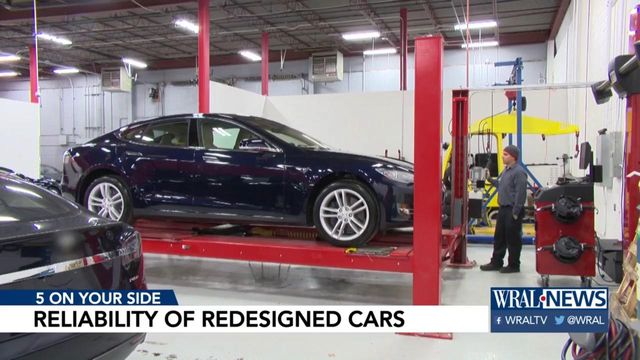5 On Your Side: How a vehicle redesign can drag down reliability
Being among the first to drive around in a sleek, newly designed car is pretty cool, until something goes wrong.
Posted — UpdatedThose kinds of changes often come with bugs or malfunctions.
Consumer Reports crunched reliability data on 420,000 vehicles. The study revealed potential problems car buyers need to know about.
“We found that in the first year of a redesign, cars often have problems because of the updates,” said Jennifer Stockburger, Consumer Reports’ auto expert. “We’ve had a number of redesigned models with transmission, in-car electronics and infotainment problems, among others.”
Consumer Reports proprietary analysis shows vehicles tend to be most reliable by the final year of any particular model run — typically five to seven years — when most of the kinks have been worked out.
How do you know if the new car you’re considering is a redesign? Consumer Reports advises watching for certain terms.
“Freshening” means minor updates that can happen in the middle of an existing model’s production run.
It could refer to styling tweaks, like a new grille, headlight design or paint color options. Some models might even get an updated engine or transmission.
“All-new” is used to describe a debut model, never built before or reintroduced after having been taken off the market for years.
“Redesigned” means it's an updated version of a model from the past.
Consumer Reports says if you’re interested in a redesigned vehicle, ask the dealer whether there are any previous-generation models available.
It could save you money and some frustrating trips to the service center.
Related Topics
• Credits
Copyright 2024 by Capitol Broadcasting Company. All rights reserved. This material may not be published, broadcast, rewritten or redistributed.






